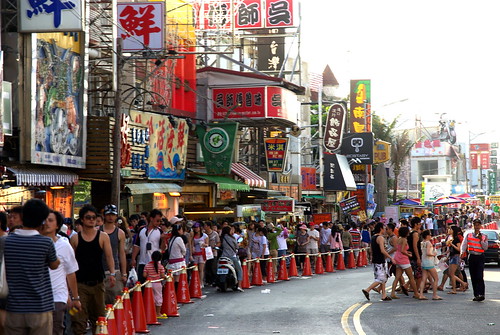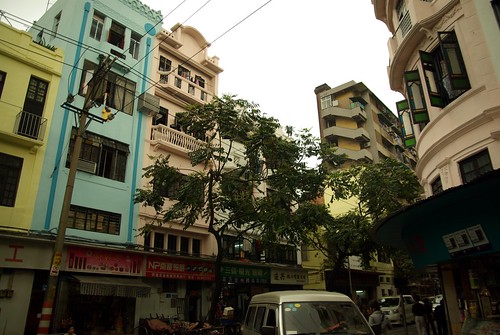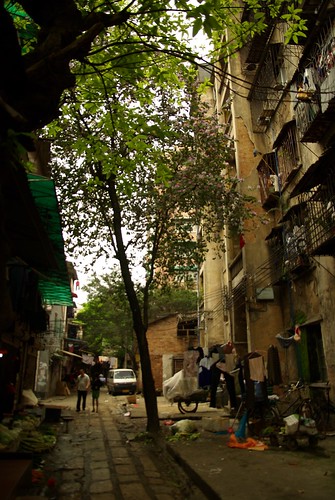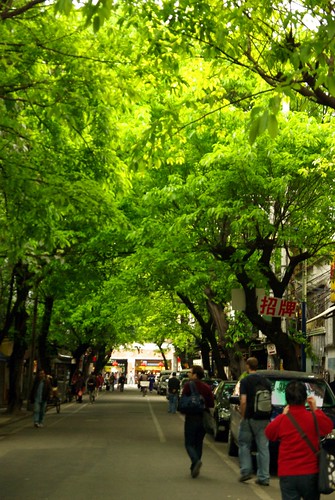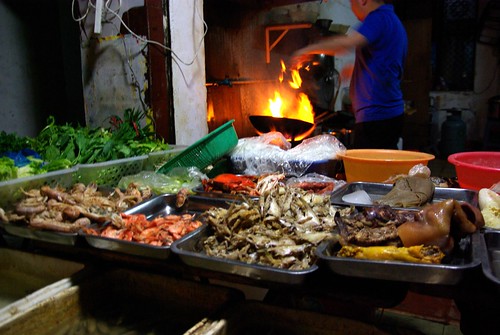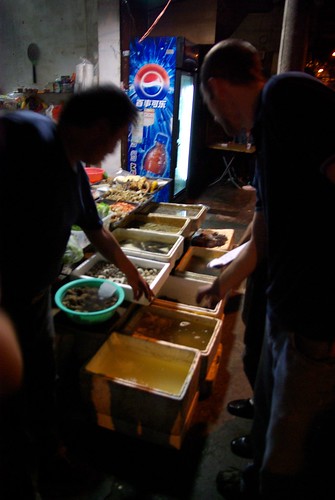Southern Metropolis / Journal sud-métropolitain, Guangzhou, 2010-03-06 Le plus important événement politique de l’année se déroule en ce moment à Beijing. Il s’agit du Congrès national du peuple, dix jours durant lesquels le gratin du pouvoir politique chinois se réunit dans la capitale chinoise. The Economist appelle l’exercice une session de béni-oui-oui, tandis que d’autres … Continue reading “Comment couvre-t-on le Congrès national du peuple ?”

Southern Metropolis / Journal sud-métropolitain, Guangzhou, 2010-03-06
Le plus important événement politique de l’année se déroule en ce moment à Beijing. Il s’agit du Congrès national du peuple, dix jours durant lesquels le gratin du pouvoir politique chinois se réunit dans la capitale chinoise. The Economist appelle l’exercice une session de béni-oui-oui, tandis que d’autres médias internationaux traitent la réunion de cette assemblée législative comme du spectacle avec beaucoup de bling-bling.
Comme j’étais en Chine continentale, à Guangzhou, par hasard, j’ai donc eu la chance d’être exposé à ce qui se passait. Par exemple, lors d’une matinée dans ma chambre d’hôtel, j’ai pu constater que la conférence de presse de Yang Jiechi, ministre des affaires étrangères, était sur toutes les chaînes disponibles de CCTV. Y’avait un journaliste français dans la première rangée.
Dans les journaux écrits, oubliez le Quotidien du Peuple / China Daily. Pas juste que personne ne le lit sérieusement, mais on ne le trouve que rarement dans les multiples stands à journaux que j’ai croisé à Guangzhou. Le quotidien le plus populaire et le plus souvent vu est le Southern Metropolis, aussi connu sous le nom chinois de Nanfang Doushi Bao (南方都是报), du même groupe médiatique que le Southern Weekend, un hebdomadaire généraliste.
J’ai un niveau assez élémentaire de chinois, mais je peux me débrouiller pour lire les titres et regarder les images. D’abord, en regardant la couverture, on voit déjà une photo plus excitante. Celle-ci a été prise par Reuters et a aussi été utilisée par le China Daily (journal officiel en anglais).
Il faut prendre en contraste la page frontispice du Quotidien du Peuple (Renmin Ribao / People’s Daily), le journal officiel, comme le montre cette image issue d’un article sur Danwei.org samedi dernier:

Ce matin en classe, ma prof a parlé longuement de la couverture du NPC et du CCPPC dans la presse chinoise et internationale. Les photos sont aussi officielles qu’avant, mais la mise en pages a changé dramatiquement (ha-ha).
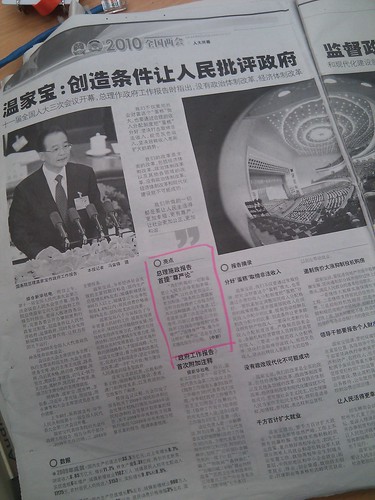
Southern Metropolis, 2010-03-06 (le jour après l’ouverture du congrès)
De retour dans le Southern Metropolis, on reprend des bouts du discours du Premier Ministre Wen Jiabao. On a parlé de cet article dans la copie du SM que j’ai rapporté (le journal n’est pas officiellement distribué à Hong Kong selon mes observations et mes collègues) cite le Premier Ministre qui a parlé de « dignité » (le mot entre guillemets chinois) comme pièce angulaire des politiques du Parti, ce qui donne en anglais, via Associated Press: “Everything we do, we do to ensure that the people live a happier life with more dignity and to make our society fairer and more harmonious.”
La page couverture de la même édition, en haut complètement de cette entrée de blogue, parle d’action forte (la police de caractères parle d’elle-même) pour contrer l’écart entre les pauvres et les riches. Un thème assez universel dans n’importe quel discours politique, quoi, y compris en Chine continentale.

Ça c’est la caricature dans le cahier des sports. C’est le spécialiste du 110 m haies, aussi membre du congrès national. Le China Daily parle de lui comme une distraction.
Dans les deux médias québécois en ligne que j’essaie de suivre, je n’ai rien vu sur Radio-Canada.ca concernant le Congrès (rien trouvé sur Google News), tandis que Cyberpresse a repris un billet de l’AFP.

